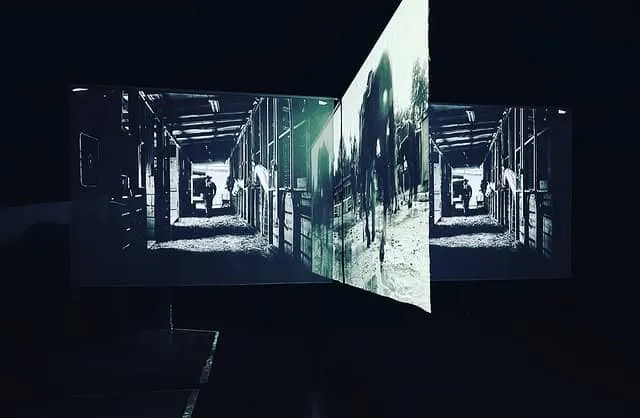Pittsburgh has always been a crossroads for many cultures. This rich tapestry enlivens the city and provides diverse opportunities to experience the artistic, cultural, and intellectual contributions brought by people from around the globe. Among these rich cultures is that of African Americans, a community that has had a significant impact both locally in Pittsburgh and around the world.
The August Wilson Center for African American Culture is a non-profit organization which includes various educational programs, as well as dance, music, art. theater, etc. Building a Home and Creating An Enduring Legacy The August Wilson Center for African American Culture is currently in the process of building a new facility: a state-of-the-art, multi-disciplinary venue. With its future location at Liberty Avenue in downtown Pittsburgh, the AWC will make a stunning addition to the growing Cultural District and a substantial contribution to the financial and cultural regeneration of the city.
The AWC will include galleries, classrooms, a 500-seat theater, a gift shop, a cafe, and many multi-purpose spaces for visual and performing arts and expression, which will be available for rental and use by the community. While the new facility will house exhibits that help tell the story of how African American culture has developed, including historical and current experiences, this is only a small part of what the August Wilson Center is about.
About August Wilson
August Wilson was a prolific playwright who eloquently chronicled African American life. A Pittsburgh native, his most celebrated achievement is a 10-play cycle often referred to as the Pittsburgh Cycle, where each play is set in a different decade of the 20th century. All but one of the plays is set in Pittsburgh's Hill District neighborhood, where Wilson was raised. Each play depicts the love, lives, comedies, triumphs, and tragedies of the African American experience.
History of AWC
The project of creating the August Wilson Center for African American Culture has been developed and driven forward by the passion and commitment of several groups of people convinced of the need for an organization of this type in Pittsburgh. Claude McKay, a famous poet from the Harlem Renaissance, once likened an intersection in the Hill District to the "Crossroads of the World."
Pittsburgh has played an essential role in African American culture and history, producing many African American achievers and cultural contributors to whom all Americans can point with pride. The organization was incorporated as a not-for-profit 501(c)3 under the African American Cultural Center of Greater Pittsburgh in 2002. Four years later, the organization adopted a new name: The August Wilson Center for African American Culture. Currently, the August Wilson Center for African American Culture is under the direction of President and CEO Neil A. Barclay, JD, who joined the organization in 2003.
Before this time, the project was governed by a group of stakeholders and a Steering Committee. Some significant milestones of the project from its inception through incorporation and into the present day include: 1996: Pittsburgh NAACP President Tim Stevens, along with other members of the Pittsburgh NAACP, created "Plans for Progress," an action plan for Pittsburgh's African American community.
The plan is drawn up as a part of the NAACP's efforts to attract the national NAACP Convention to the City of Pittsburgh. The plan includes a statement urging the mayor to provide strong financial and resource backing for an African American museum. 1996: Mayor Tom Murphy agrees to support the effort to build the museum and arranges for Stevens to meet with Mulugetta Birru, Executive Director of the City of Pittsburgh Urban Redevelopment Authority. Dr. Birru is receptive to the idea and secures a commitment of $500,000 from the URA to begin research on this project. 1996: Mayor Tom Murphy charged Pittsburgh City Council Members Valerie McDonald and Sala Udin to make the dream of building an African American cultural center a reality.
A Study Team is formed, and funds for a feasibility study are secured. 1999: A Steering Committee is formed to direct the development process. They envision a cultural center with space for exhibitions, performances, and education: a new landmark attraction for residents and tourists, supporting growth in entertainment, and adding social and economic benefits to the region.
This Steering Committee includes: Mulugetta Birru, Carol Brown, Ellsworth Brown, Esther Bush, Oliver Byrd, Doris Carson-Williams, Yvonne Cook, Judith Davenport, Arthur Edmunds, Andrew Masich, Valerie McDonald, Joseph McGrath, Richard Stafford, Timothy Stevens, Williams Strickland, Jr., Sala Udin, and Nancy Washington. 2000: Lord Cultural Resources Planning and Management, the most prominent international consultancy in museums and cultural facilities management, is commissioned to work with the Steering Committee on the project's development. 2000: A National Charette convenes in Pittsburgh to discuss and debate issues concerning the future of the proposed African American Cultural Center, its plans, goals, and objectives.
The national-level Charette brings together community leaders, elected officials, funders, consulting team members, and an invited national panel of experts to inform and energize the project and give shape to the concept. 2001: Site evaluation and selection are completed under the direction of the Urban Redevelopment Authority.

Tuesday Closed
Wednesday Closed
Thursday 3–8 PM
Friday 3–8 PM
Saturday 12–5 PM
Sunday 12–5 PM